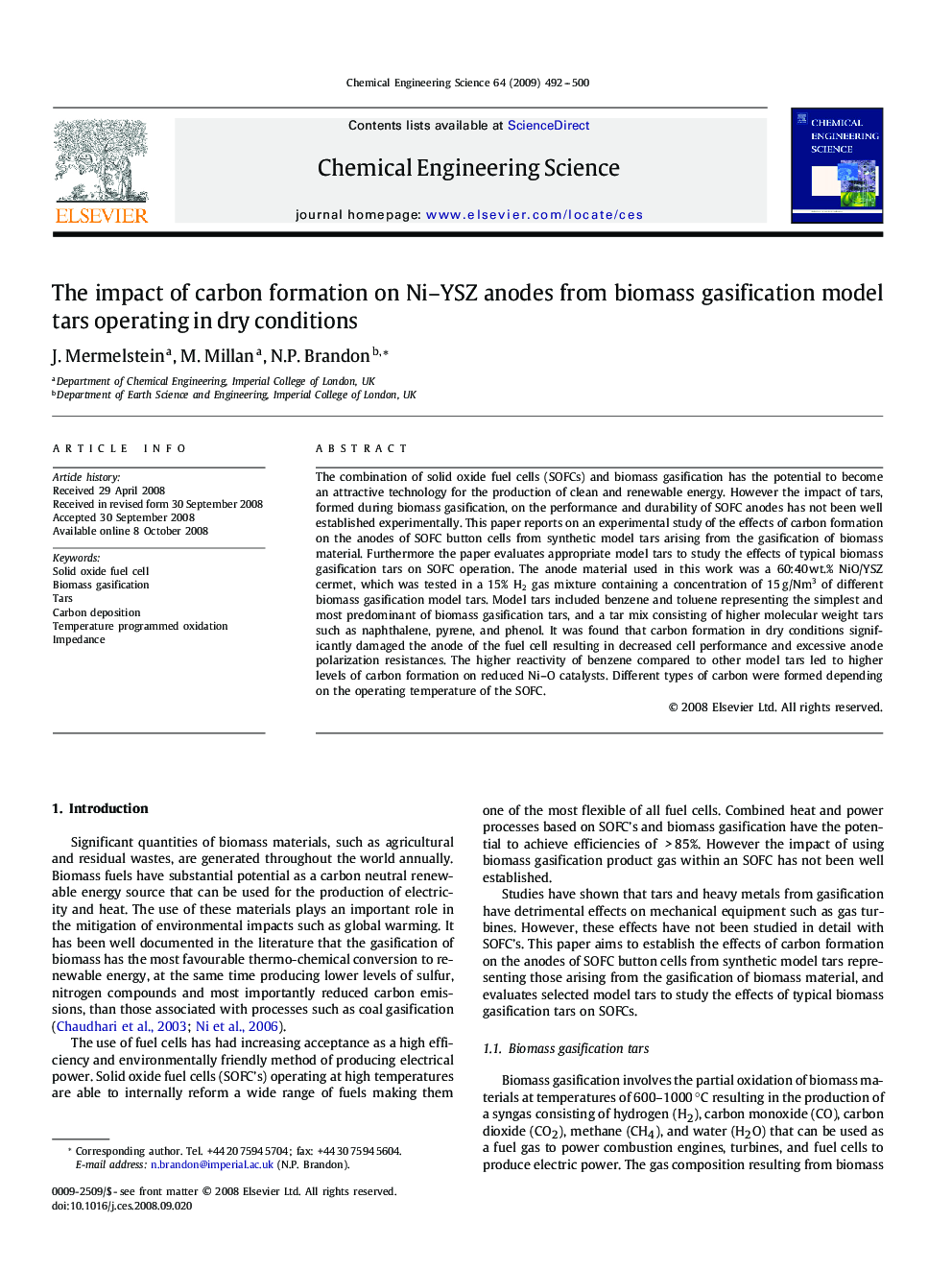| Article ID | Journal | Published Year | Pages | File Type |
|---|---|---|---|---|
| 157230 | Chemical Engineering Science | 2009 | 9 Pages |
The combination of solid oxide fuel cells (SOFCs) and biomass gasification has the potential to become an attractive technology for the production of clean and renewable energy. However the impact of tars, formed during biomass gasification, on the performance and durability of SOFC anodes has not been well established experimentally. This paper reports on an experimental study of the effects of carbon formation on the anodes of SOFC button cells from synthetic model tars arising from the gasification of biomass material. Furthermore the paper evaluates appropriate model tars to study the effects of typical biomass gasification tars on SOFC operation. The anode material used in this work was a 60:40 wt.% NiO/YSZ cermet, which was tested in a 15% H2 gas mixture containing a concentration of 15 g/Nm3 of different biomass gasification model tars. Model tars included benzene and toluene representing the simplest and most predominant of biomass gasification tars, and a tar mix consisting of higher molecular weight tars such as naphthalene, pyrene, and phenol. It was found that carbon formation in dry conditions significantly damaged the anode of the fuel cell resulting in decreased cell performance and excessive anode polarization resistances. The higher reactivity of benzene compared to other model tars led to higher levels of carbon formation on reduced Ni–O catalysts. Different types of carbon were formed depending on the operating temperature of the SOFC.
